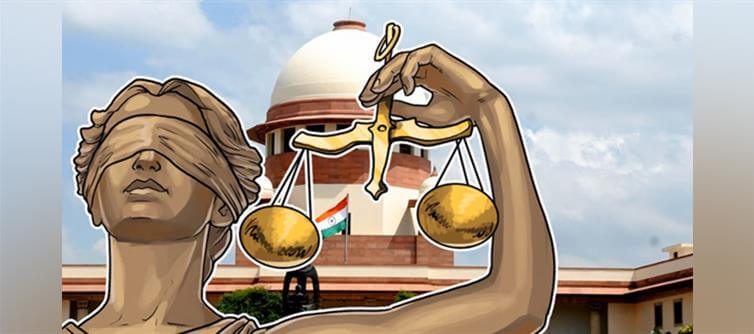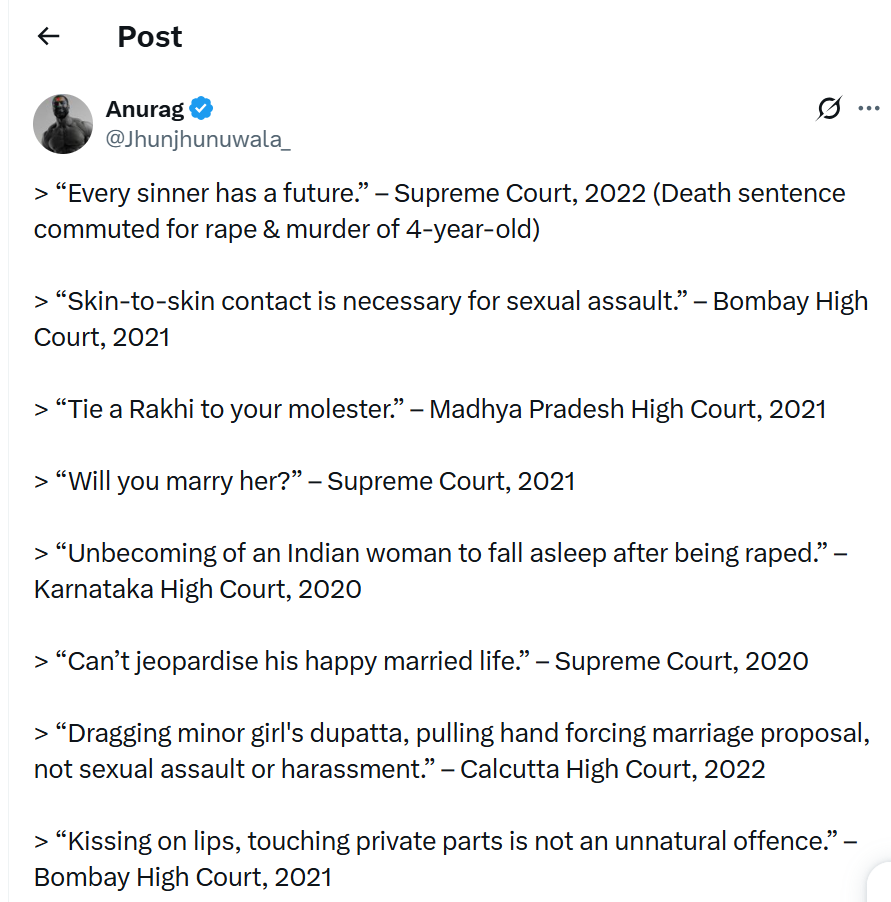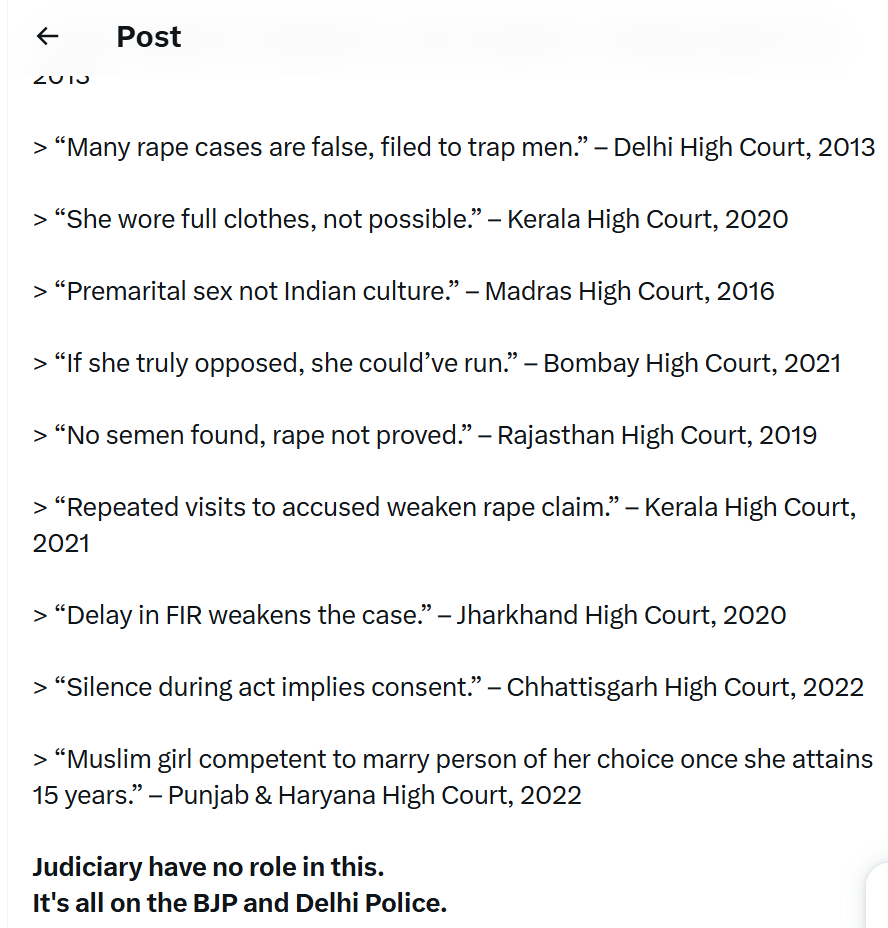
These statements, spanning from 2013 to 2022, reflect a judicial approach that often appears to undermine the gravity of sexual violence, placing the burden of proof or behavior on victims rather than holding perpetrators accountable. The tweet’s connection to an NDTV report about a man out on bail in a rape case who subsequently shot the survivor in delhi further underscores the real-world consequences of such judicial leniency.
 Delving deeper, the listed judgments reveal a troubling tendency to question the credibility of survivors based on arbitrary and patriarchal standards. For instance, remarks like “She appeared to be loose” (Madhya Pradesh High Court, 2014) or “No injuries? Then it’s not rape” (Delhi High Court, multiple instances between 2013-2019) suggest a reliance on stereotypes rather than evidence, potentially deterring victims from coming forward.
Delving deeper, the listed judgments reveal a troubling tendency to question the credibility of survivors based on arbitrary and patriarchal standards. For instance, remarks like “She appeared to be loose” (Madhya Pradesh High Court, 2014) or “No injuries? Then it’s not rape” (Delhi High Court, multiple instances between 2013-2019) suggest a reliance on stereotypes rather than evidence, potentially deterring victims from coming forward. Other rulings, such as the karnataka High Court’s 2020 comment that it was “unbecoming of an indian woman to fall asleep after being raped” or the madras High Court’s 2015 suggestion to “let them marry and settle it,” expose a systemic failure to address the trauma of sexual assault, instead proposing resolutions that prioritize the accused’s convenience over justice. The tweet’s sarcastic note that “Judiciary has no role in this. It’s all on the bjp and delhi Police” serves as a biting critique, redirecting attention to the judiciary’s pivotal role in shaping legal outcomes and societal attitudes toward gender-based violence.
Other rulings, such as the karnataka High Court’s 2020 comment that it was “unbecoming of an indian woman to fall asleep after being raped” or the madras High Court’s 2015 suggestion to “let them marry and settle it,” expose a systemic failure to address the trauma of sexual assault, instead proposing resolutions that prioritize the accused’s convenience over justice. The tweet’s sarcastic note that “Judiciary has no role in this. It’s all on the bjp and delhi Police” serves as a biting critique, redirecting attention to the judiciary’s pivotal role in shaping legal outcomes and societal attitudes toward gender-based violence.



 click and follow Indiaherald WhatsApp channel
click and follow Indiaherald WhatsApp channel